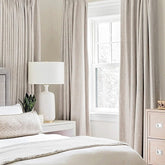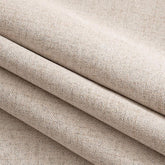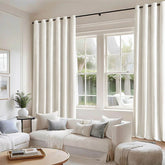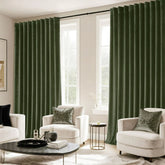Breathe Easy: Allergy-Friendly Fabrics for Bedding and Pillows.
If your mornings start with sneezing fits, itchy eyes, or a stuffy nose, your bedding might be part of the problem. The truth is, while we all love soft, cozy fabrics, not every textile is kind to sensitive skin or allergy-prone sleepers.
Let’s talk about how to make your bedroom more breathable—literally—with allergy-friendly fabrics that help you sleep better, wake up clearer, and feel healthier in your own space.

Why Your Bedding Fabric Matters
It’s easy to overlook what our bedding is made of. We often shop by color, pattern, or thread count. But for allergy sufferers, the wrong fabric can trap dust mites, mold spores, and pet dander—turning your bed into a hotspot for sneaky irritants.
Choosing the right material can actually reduce allergens in your bedroom, especially for items that are close to your skin: your pillow covers, sheets, and duvet.
Best Allergy-Friendly Fabrics for Pillows & Bedding
Let’s break down a few options that are both stylish and breathable:
1. Cotton (Especially Organic Cotton)
Cotton is a classic for a reason. It’s soft, breathable, and easy to wash—three essentials for allergy relief. But not all cotton is equal.
Look for organic cotton, which skips the harsh chemicals and pesticides. It’s gentler on the skin and better for long-term health, especially if you wash your bedding weekly.
2. Bamboo
Naturally hypoallergenic, bamboo fabric is a favorite in the allergy-friendly world. It’s moisture-wicking (goodbye, night sweats), breathable, and resistant to dust mites.Bonus: it feels buttery smooth and has a luxe drape that makes your bed look effortlessly styled.
3. Microfiber (Tightly Woven)
While not natural, high-quality microfiber with a tight weave can actually block dust mites and allergens. It’s lightweight, soft, and dries quickly.
Look for certified “allergy barrier” microfiber pillow protectors if you're trying to keep your current pillows but want a better layer between you and allergens.
What to Avoid
If you’re sensitive, skip the following:
Feather or down pillows – even if labeled hypoallergenic, they can still trigger reactions.
Heavily dyed or scented fabrics – fragrances and dye chemicals can be sneaky irritants.
Loose-weave fabrics – more room for dust mites to settle in.
Don’t Forget the Details
The fabric you choose matters, but how you care for it is just as important:
Wash weekly in hot water (130°F or above) to kill allergens.
Use allergen-proof covers on your pillows and mattress.
Keep humidity low to prevent mold—your fabrics will thank you.
You shouldn’t have to choose between comfort and clean air. With the right bedding and pillow materials—like organic cotton or bamboo—you can sleep better and breathe easier.
At the end of the day, your home decor choices should support your health just as much as your style. And when it comes to something as intimate as your bed, investing in allergy-friendly fabrics is always a win.








